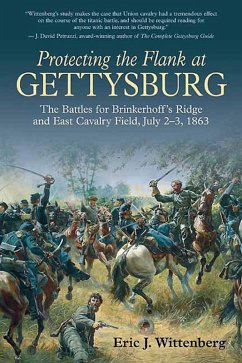The award-winning Civil War historian's study "makes the case that Union cavalry had a tremendous effect on the course of the titanic battle" (J. David Petruzzi, author of The Complete Gettysburg Guide). On July 3, 1863, a large-scale cavalry fight was waged on Cress Ridge four miles east of Gettysburg. There, on what is commonly referred to as East Cavalry Field, Union horsemen under Brig. Gen. David M. Gregg tangled with the vaunted Confederates riding with Maj. Gen. Jeb Stuart. This magnificent mounted clash, however, cannot be fully appreciated without an understanding of what happened the previous day at Brinkerhoff's Ridge, where elements of Gregg's division pinned down the legendary infantry of the Stonewall Brigade, preventing it from participating in the fighting for Culp's Hill that raged that evening. After arriving at Gettysburg on July 2 and witnessing the climax of the fighting at Brinkerhoff's Ridge, Stuart knew that if he could defeat Gregg's troopers, he could dash thousands of his own men behind enemy lines and wreak havoc. The ambitious offensive thrust resulted the following day in a giant clash of horse and steel on East Cavalry Field. The combat featured artillery duels, dismounted fighting, hand-to-hand engagements, and the most magnificent mounted charge and countercharge of the entire Civil War. This fully revised edition of Protecting the Flank at Gettysburg is the most detailed tactical treatment of the fighting on Brinkerhoff's Ridge yet published, and includes a new Introduction, a detailed walking and driving tour with GPS coordinates, and a new appendix refuting claims that Stuart's actions on East Cavalry Field were intended to be coordinated with the Pickett/Pettigrew/Trimble attack on the Union center on the main battlefield.
Dieser Download kann aus rechtlichen Gründen nur mit Rechnungsadresse in A, B, BG, CY, CZ, D, DK, EW, E, FIN, F, GR, HR, H, IRL, I, LT, L, LR, M, NL, PL, P, R, S, SLO, SK ausgeliefert werden.









